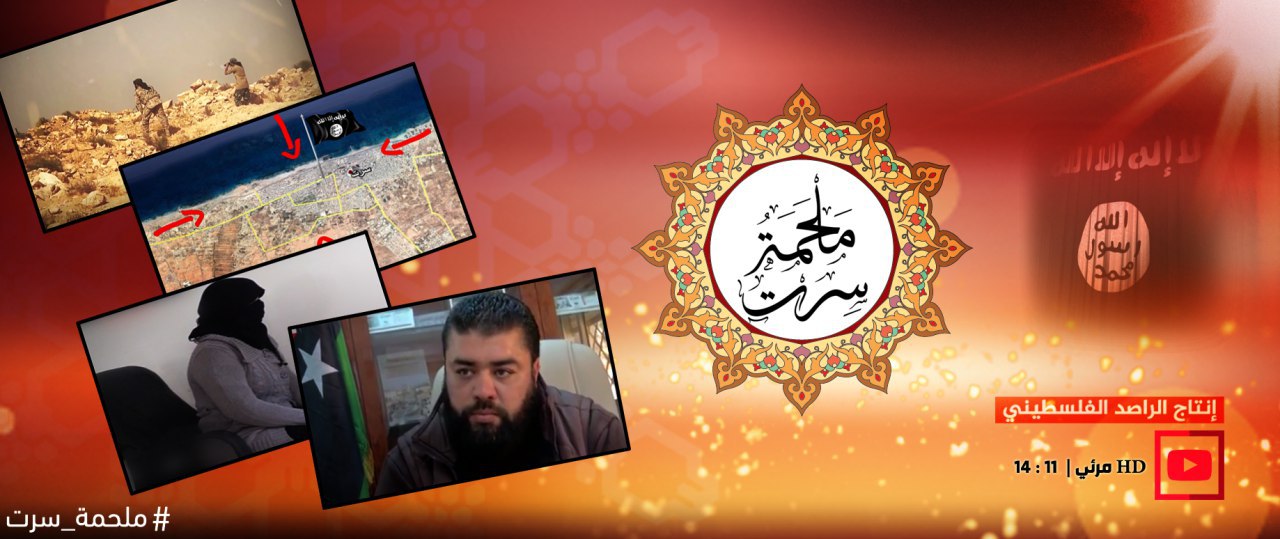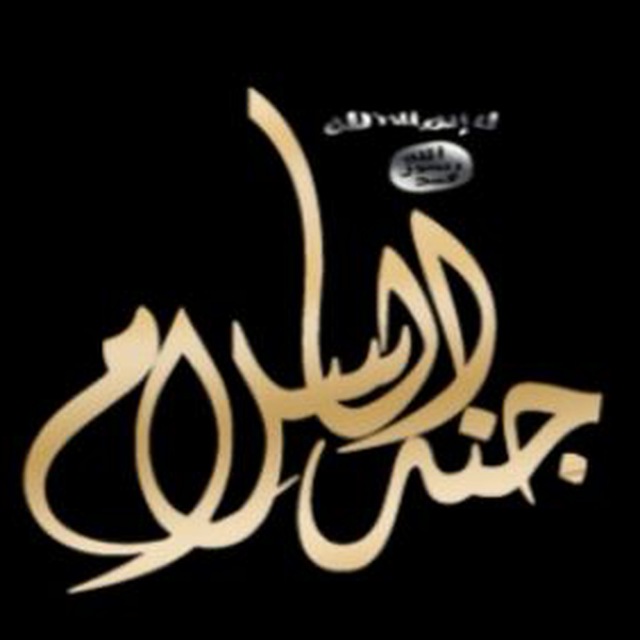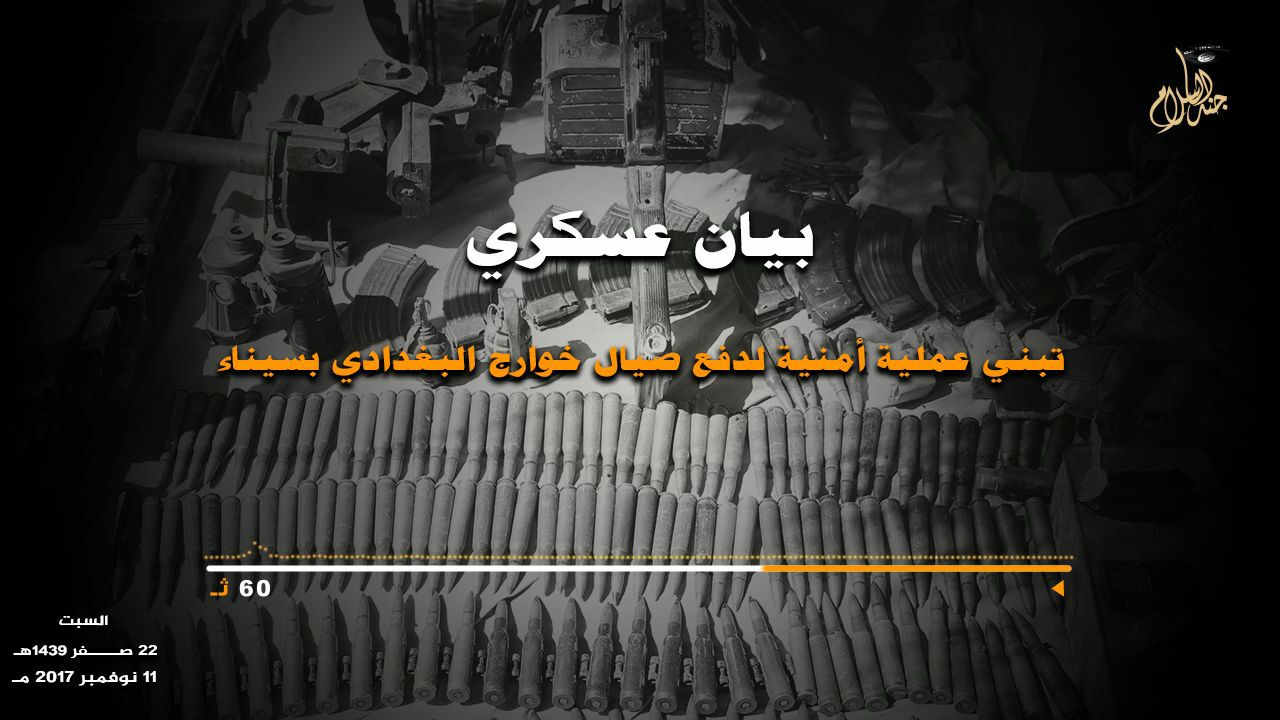
The Islamic State: “My State Is Unbeatable”
_________
To inquire about a translation for this nashīd for a fee email: [email protected]
Category: The Islamic State
New video message from The Islamic State: "The Land of Lining Up For Battle – Wilāyat Diyālā"

__________
To inquire about a translation for this video message for a fee email: [email protected]
New issue of The Islamic State’s newsletter: “al-Nabā’ #106"
For prior parts see: #105, #104, #103, #102, #101, #100, #99, #98, #97, #96, #95, #94, #93, #92, #91, #90, #89, #88, #87, #86, #85, #84, #83, #82, #81, #80, #79, #78, #77, #76, #75, #74, #73, #72, #71, #70, #69, #68, #67, #66, #65, #64, #63, #62, #61, #60, #59, #58, #57, #56, #55, #54, #53, #52, #51, #50, #49, #48, #47, #46, #45, #44, #43, #42, #41, #40, #39, #38, #37, #36, #35, #34, #33, #32, #31, #30, #29, #28, #27, #26, #25, #24, #23, #22, #21, #20, #19, #18, #17, #16, #15, #14, #13, #12, #11, #10, #9, #8, #7, #6, #5, #4, #3, #2, and #1.
—

Click the following link for a safe PDF copy: The Islamic State — al-Nabā’ Newsletter #106
__________
To inquire about a translation for this newsletter issue for a fee email: [email protected]
New video message from The Islamic State: “The Way of Glory #2 – Wilāyat Dimashq”
Click here for the first part in this video series.
—

___________
To inquire about a translation for this video message for a fee email: [email protected]
Eye on Jihadis in Libya Weekly Update: 14 November 2017
IS in Action
IS cells in Libya are reported to have established temporary checkpoints 70 km south of Sirte on the road to Waddan and also near Bohadi village in the same district, on the 8 and 13 November respectively. The group is said to have stopped and searched civilian vehicles and seized goods.
In the 105th edition of IS’s weekly al-Naba online magazine the group claims its fighters in Libya repelled an attack by the Libyan National Army in Cyrenaica on the 2nd of November, causing casualties and damaging equipment.
Other Jihadi Actors
On 9 November, the Libyan National Army (LNA) claimed complete control of Sidi Khribesh district of Benghazi, in the downtown area close to the port. The LNA reportedly defeated the last remaining fighters from the jihadi coalition who had been hiding out there since Khalifa Haftar announced Benghazi had been officially ‘liberated’ in July. Several jihadis and three LNA fighters were reportedly killed in the clashes, and several more injured.
On 7 November, the death of the Benghazi Revolutionaries’ Shura Council (BRSC) member Mohammed Bakr al-Yedri, known as ‘al-Nahla’ led to protests in Misrata. Photograph’s of Yedri’s body in Misrata hospital mortuary showed signs of bruising and foaming at the mouth. Supporters claimed he had been subjected to electric shocks. This led to frictions between security forces in the city and protestors, however no clashes were recorded.
The tensions forced the High Council of State (HCS) President Abdurrahman Swehli to go to Misrata on 11 November to meet his former foe Khalifa al-Ghwell, prime minister of the defunct General National Congress (GNC). Both apparently ‘reconciled’ in a published video on social media, after intense arguments between both over the failure of the GNA to unify Libya.
A weekly update of ISIS’s actions, the Western response, and developments pertaining to Libya’s other militias is available by subscribing here. To read about Western countries’ responses to ISIS in Libya this week, click here. To read their explanation of the developments within the anti-ISIS Coalition of Libyan militias, click here.
To read all four sections of this week’s Eye on ISIS in Libya report, click here. To subscribe to receive this report weekly into your inbox, sign up on the subscribe page.
New video message from al-Raṣād al-Filisṭīnī: "The Epic Battles of Surt"

____________
Source: Telegram
To inquire about a translation for this video message for a fee email: [email protected]
New statement from Jund al-Islām: "Innocence From the Massacre of Muslim Drivers in Central Sinai"

Click from the following link for a safe PDF copy: Jund al-Islām — Innocence From the Massacre of Muslim Drivers in Central Sinai
___________
Source: Telegram
To inquire about a translation for this statement for a fee email: [email protected]
New video message from Jund al-Islām: "Military Statement: Adopting the Security Operation For Repelling the Kharijites of al-Baghdādī in the Sinai"

___________
Source: Telegram
To inquire about a translation for this video message for a fee email: [email protected]
New video message from The Islamic State: "Snipers of the South – Wilāyat al-Janūb"

____________
To inquire about a translation for this video message for a fee email: [email protected]
New issue of The Islamic State’s newsletter: “al-Nabā’ #105"
For prior parts see: #105, #103, #102, #101, #100, #99, #98, #97, #96, #95, #94, #93, #92, #91, #90, #89, #88, #87, #86, #85, #84, #83, #82, #81, #80, #79, #78, #77, #76, #75, #74, #73, #72, #71, #70, #69, #68, #67, #66, #65, #64, #63, #62, #61, #60, #59, #58, #57, #56, #55, #54, #53, #52, #51, #50, #49, #48, #47, #46, #45, #44, #43, #42, #41, #40, #39, #38, #37, #36, #35, #34, #33, #32, #31, #30, #29, #28, #27, #26, #25, #24, #23, #22, #21, #20, #19, #18, #17, #16, #15, #14, #13, #12, #11, #10, #9, #8, #7, #6, #5, #4, #3, #2, and #1.
—

Click the following link for a safe PDF copy: The Islamic State — al-Nabā’ Newsletter #105
___________
To inquire about a translation for this newsletter issue for a fee email: [email protected]

